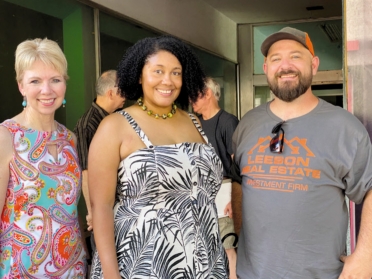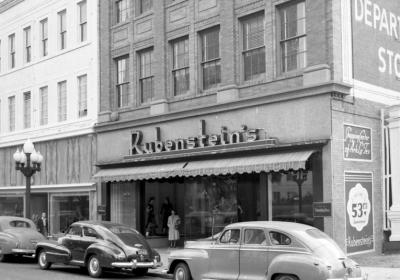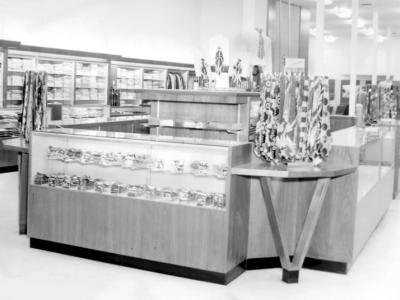Rubenstein’s Revisited

Historical downtown building set for renovation
Isaiah Lee was fired from his first job.
The person who swung the hatchet? Lee’s father.
“Because I thought I knew better than him,” Lee remembered. “I’m sure it hurt, and I was pissed off.”
Twenty-five years later, the founder and co-owner of Leeson Real Estate Investment Firm has a different perspective.
“Truth is, that’s what I needed. It gave me the motivation to go out and really see what it’s like out there and to really develop the skills I needed to thrive in my industry,” Lee said.
Lee’s industry is construction. Specifically, taking houses and buildings no one else wants and turning them into something a lot of folks want.
“I’m trying to give people a place they would be proud to live in,” Lee said of his work in the Cedar Grove and Allendale areas. “They’re happy to live in the nicest house on the block in those neighborhoods, and they grew up in those neighborhoods. They don’t want to leave. They just want a nice place.”
Now, after also doing restoration work in the Highland area, Lee is taking on his biggest project – and his biggest challenge. For $50,000, the 43-year-old single father of four children is the proud owner of two downtown buildings in the 500 block of Milam Street. At one time, those buildings made up the popular Rubenstein’s Department Store, which has been vacant for more than three decades.
Sounds like a good price? It is, and there’s a reason.
“The buildings were in very bad shape and continue to be,” said Liz Swaine, executive director of the Downtown Development Authority. “(They are) very compromised. Lots of roof leaks. Lots of water damage from years of water intrusion. It was going to take a very special person to see beyond the damage, beyond the despair, beyond all of the sketchiness of those two buildings.”
Swaine believes she found her man.
“When I took Isaiah through (the building), he was not saying a lot. But I could tell his wheels were turning. He had a smile on his face, even when we were looking at things that I thought were going to be dealbreakers.”
Lee expects to start renovations at the beginning of next year, with a project timeline of two to three years.
 “We believe it will be a true multifunctional building,” Lee said. “We’re looking to do 36-40 Class A, high-end rentals. About 12 of them will be shortterm rentals that people can rent, like Airbnb and VRBO. Imagine coming to our downtown festivals, renting one of these places and not having to leave downtown. You can walk right to the festival, then pack up and leave.”
“We believe it will be a true multifunctional building,” Lee said. “We’re looking to do 36-40 Class A, high-end rentals. About 12 of them will be shortterm rentals that people can rent, like Airbnb and VRBO. Imagine coming to our downtown festivals, renting one of these places and not having to leave downtown. You can walk right to the festival, then pack up and leave.”
Lee’s plans also call for a 50 person capacity multi-purpose room, which can host private concerts or weddings. He also expects to have a bistro-coffee shop area and a “grand, formal entrance on the residence side.” That’s all in addition to a gym and 45 self-storage units in the building’s basements.
“I am elated,” Swaine said of what’s on Lee’s drawing board. “I think it is a great plan for the buildings, and a great place for downtown. It is something of which we have waited for a long time.”
After being fired, Lee moved from Shreveport and worked on primarily East Coast construction projects. Twelve years ago, he returned to the city where he had spent most of his life.
“Instead of bashing Shreveport, I saw some great opportunities, and I put my skills to work here.”
Lee had been keeping his eye on downtown development and was looking for the right fit.
“I’ve watched the growth of downtown the past four years. It’s been slow but steady. Now, it’s really starting to pick up. About two years ago, we began actively looking for buildings. A lot of them are way overpriced, in my opinion. For example, one of the last ones I looked at was 11,000 square feet, and it was just a brick shell. They wanted a quarter of a million dollars for it. It was just a brick shell. I passed on that.”
 Compared to that, the $50,000 Lee paid for the old Rubenstein’s and Lanford properties doesn’t seem like a bad price.
Compared to that, the $50,000 Lee paid for the old Rubenstein’s and Lanford properties doesn’t seem like a bad price.
“There’s already been several successful buildings that have done this business model,” Lee said. “The old Sears building (now Lofts at 624) and the new building—The Standard. They have a 90 percent occupancy rate. On their smaller apartments, there is a one-year wait. That’s a good sign.”
But Lee’s faith in downtown comes with a hefty investment.
“When we first started looking at it, we thought it would be about $5.5 million. With the cost of labor, goods and the length of getting those goods, and insurance, everything has gone up and is going to keep going up. We’re now around $8 million. We speculate by the time we get to the finish line, we will be closer to $9 million.”
Swaine says Lee told her, “I can do this. I will make this into something we can be proud of.”
Swaine has a long memory. “I’m going to hold him to it.”
While Swaine champions all downtown renovation projects, she admits this project stands out.
“Those buildings hold a special place in many hearts. People who remember coming downtown in the heyday of the department store – from the 1940s until roughly the mid-’70s – remember (Rubenstein’s) so fondly. It was one of the grand dames of department stores in downtown Shreveport,” Swaine said.
 Lee
went to work for his father, who was in the masonry business, when Lee
was just 14 years old. Even then, he had an affinity for old buildings.
Lee
went to work for his father, who was in the masonry business, when Lee
was just 14 years old. Even then, he had an affinity for old buildings.
“I grew up doing brand new builds, but I always had a love for history and architecture. When I looked at what kind of business I wanted to go after, I really wanted to save as many of these old, historical buildings as possible. I just love the way they’re built. I love the quality of material they’re built out of, how they were built, and the history that’s behind them. You look at them, and there’s some man that probably put six months of his life into really making that building look phenomenal. I just like restoring that.”
Notice that Lee said “restoring,” not “tearing down.”
“Whenever we can save the doors, save the windows, save the same exterior, we do so. We don’t rip out the windows. We don’t rip out the doors. Those are really the souls of the house. We try to keep them as correct as much as possible.”
For Swaine, Lee’s downtown project is another step in revitalizing the area.
“Vacant buildings are the single most damaging thing right now in downtown. … We have very few tools – almost none – to compel (owners) to do anything. When you have a vacant building, especially if you’re not keeping up the maintance on it, if you’re not keeping the windows and doors secured, you just start having all sorts of problems. That affects your neighbors, then that affects the block. Then that affects all of downtown. Just having these buildings back in commerce again is tremendous.”
